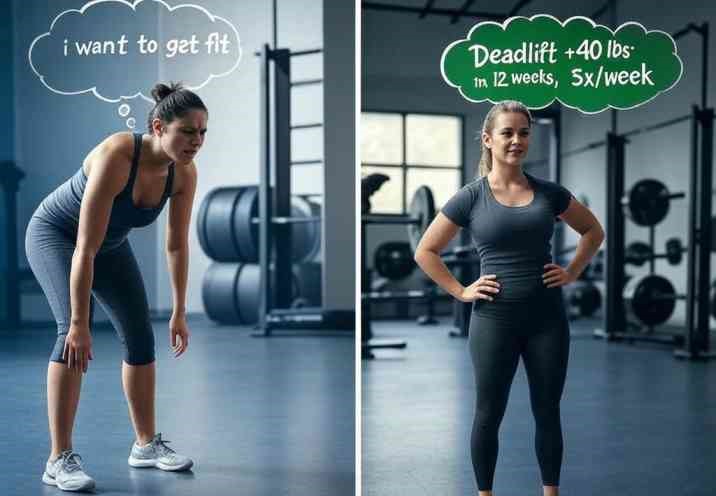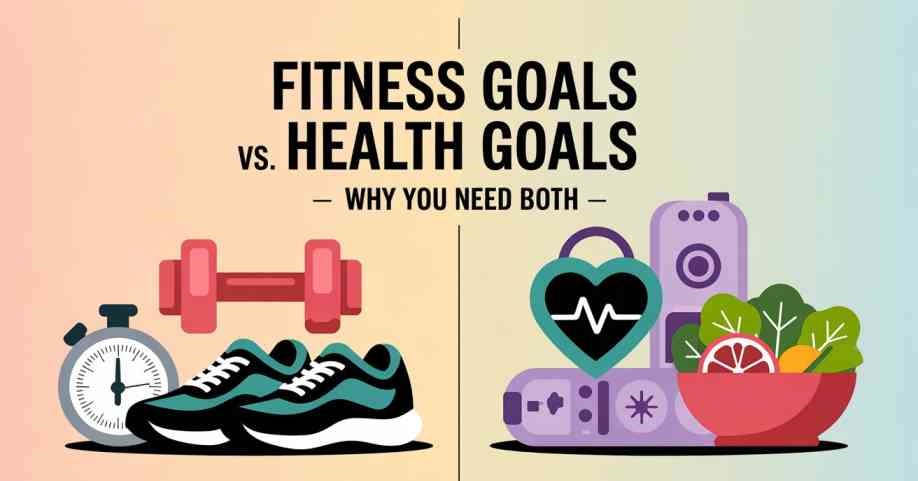Discover effective strategies to set, track, and achieve your fitness health goals with clarity and confidence. Start your wellness journey today!

The Real Reason Most Fitness Health Goals Fail (And How to Change That)
Be honest—how many times have you said, “This year, I’ll get fit,” only to feel stuck by February?
You’re not alone. According to a 2023 report by Forbes Health, 48% of people set fitness-related goals, but over 80% abandon them within the first three months.
So, what’s missing? It’s not motivation. It’s clarity and strategy.
In this post, we’ll explore practical, research-backed ways to set and actually achieve your fitness health goals in 2025. Whether you’re aiming to lose weight, build muscle, improve endurance, or just feel healthier, this guide is for you.

What Are Fitness Health Goals, Really?
“Fitness health goals” go beyond fitting into a certain size or hitting a number on the scale. They are personalized benchmarks that reflect your physical performance, overall health, and wellbeing. Examples include:
- Running a 5K without stopping
- Reducing body fat percentage
- Increasing daily step count to 10,000
- Lowering resting heart rate
- Improving sleep and recovery metrics
Unlike vague resolutions, true fitness health goals are measurable, attainable, and aligned with your lifestyle.

Fitness Goals vs. Health Goals: Why You Need Both
While closely related, fitness and health goals aren’t identical. Here’s a quick breakdown:
| Goal Type | Focus Area | Example |
|---|---|---|
| Fitness | Physical performance | Increase bench press weight by 20 lbs |
| Health | Body functions & wellbeing | Lower blood pressure to normal range |
A balanced approach includes both:
- Fitness goals boost your physical capability.
- Health goals protect your body from illness and improve longevity.
Why SMART Goals Are Your Best Friend
You’ve likely heard of SMART goals: Specific, Measurable, Achievable, Relevant, Time-bound. But how do they apply to fitness?
Let’s say your goal is to “get stronger.”
A SMART version would be:
“Increase my deadlift by 40 lbs in 12 weeks by training three times per week.”
Why this works:
- Specific: Deadlift
- Measurable: 40 lbs
- Achievable: With proper programming
- Relevant: Aligned with strength goals
- Time-bound: 12 weeks
Research from the American Psychological Association shows that clearly defined goals lead to higher success rates because they provide focus and motivation.
Key Insights from Real Fitness Journeys
1. Start Where You Are, Not Where You Wish You Were
One common mistake? Comparing your chapter 1 to someone else’s chapter 20. As someone who once couldn’t run a mile without stopping, I know how humbling the beginning can be.
Start with:
- A baseline fitness assessment (VO2 max, push-up count, flexibility)
- Reviewing past attempts and identifying what derailed progress
2. Focus on Habits, Not Just Outcomes
Instead of obsessing over results, build systems:
- Schedule workouts like appointments
- Keep a habit tracker (apps like Habitica or Streaks)
- Set “minimum effort” goals like “10-minute walk daily”
James Clear, author of Atomic Habits, emphasizes that “you do not rise to the level of your goals. You fall to the level of your systems.”
3. Progress Isn’t Linear—And That’s Okay
Fitness health goals don’t follow a straight path. Some weeks you might plateau or even regress. That’s normal. Track long-term trends rather than short-term fluctuations.
Tools like MyFitnessPal, Whoop, or Apple Health provide helpful visual data over time.
Proven Strategies to Stay on Track
💡 Set Micro-Goals
Break large goals into smaller checkpoints:
- 1st month: Workout 3x/week consistently
- 2nd month: Add progressive overload
- 3rd month: Hit new personal records
🔄 Adjust Goals as You Evolve
Use more than weight or inches. Track:
Your body adapts. Your goals should too. After hitting one milestone, recalibrate:
Shift from fat loss to strength training Swap cardio for mobility work if joints feel stiff
👯 Accountability = Progress
Don’t go it alone. Join a community, hire a coach, or partner with a workout buddy.
Try:
- Fitness challenges (e.g. 75 Hard, Couch to 5K)
- Online groups like Reddit’s r/Fitness
- Social fitness apps like Strava or Fitbit
📈 Track Metrics That Matter
- Energy levels
- Recovery time
- Resting heart rate
- Mood and focus
Common Pitfalls to Avoid
- All-or-nothing thinking: Missing one workout doesn’t mean failure.
- Overtraining: More isn’t always better. Rest is crucial.
- Chasing trends: Stick with what works for you, not what’s popular.
Conclusion: Your Fitness Health Goals Deserve More Than Just a January Start
Your journey isn’t about a “summer body” or ticking off resolutions. It’s about becoming the version of you that feels strongest, healthiest, and most alive.
With clarity, consistency, and compassion, your fitness health goals aren’t just dreams—they’re actionable plans.
So, where will you begin?

✅ Your Next Step: Let’s Crush These Goals Together!
Start by writing down your #1 fitness health goal and commit to one small action this week. Want more strategies, motivation, and resources? Subscribe to our newsletter and join a community that’s walking (and running, lifting, and stretching) alongside you.
Let’s make 2025 your strongest year yet!


Pingback: Physical Fitness: Transform Your Body, Mind & Lifestyle - Health Pulsewise